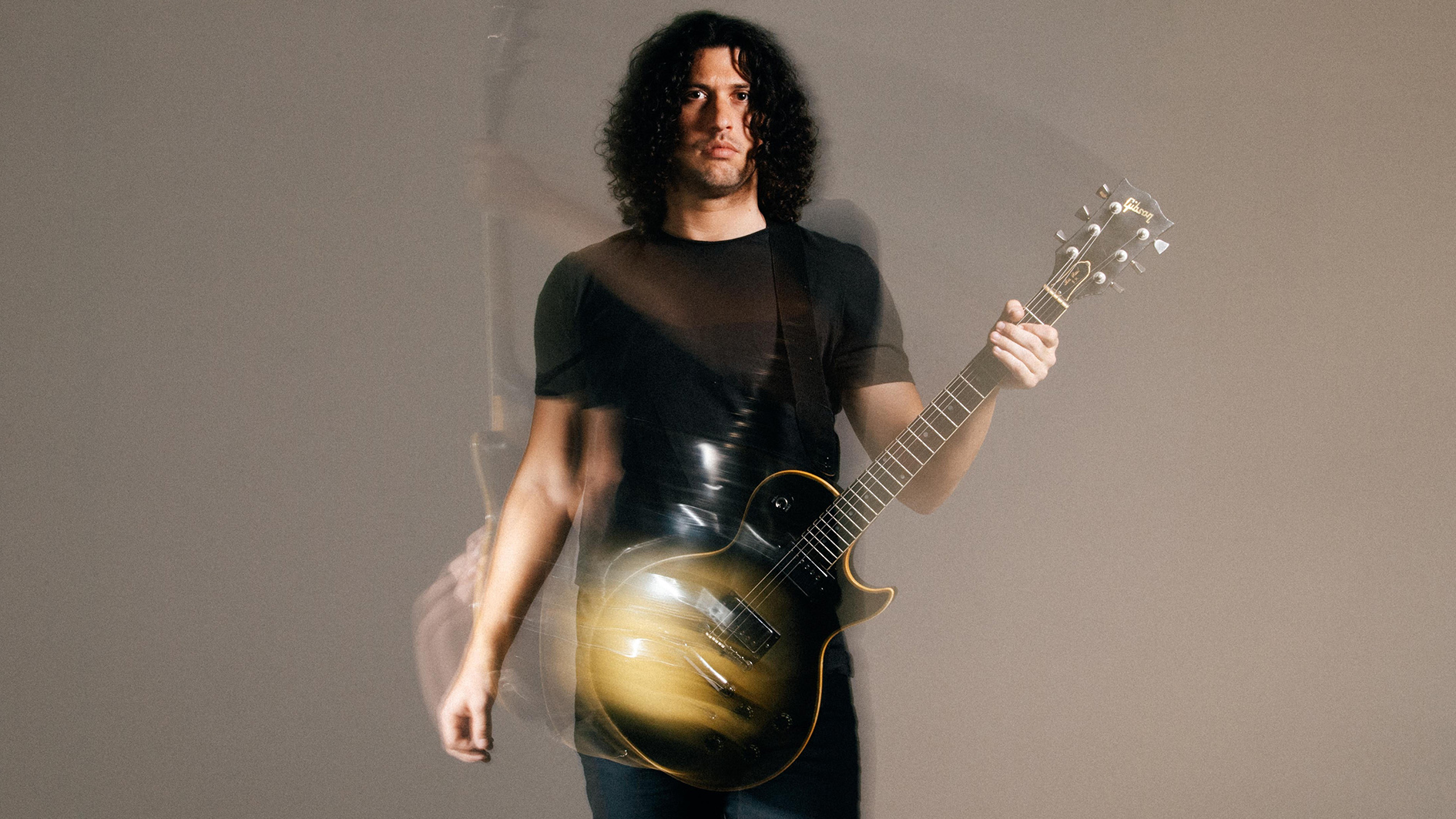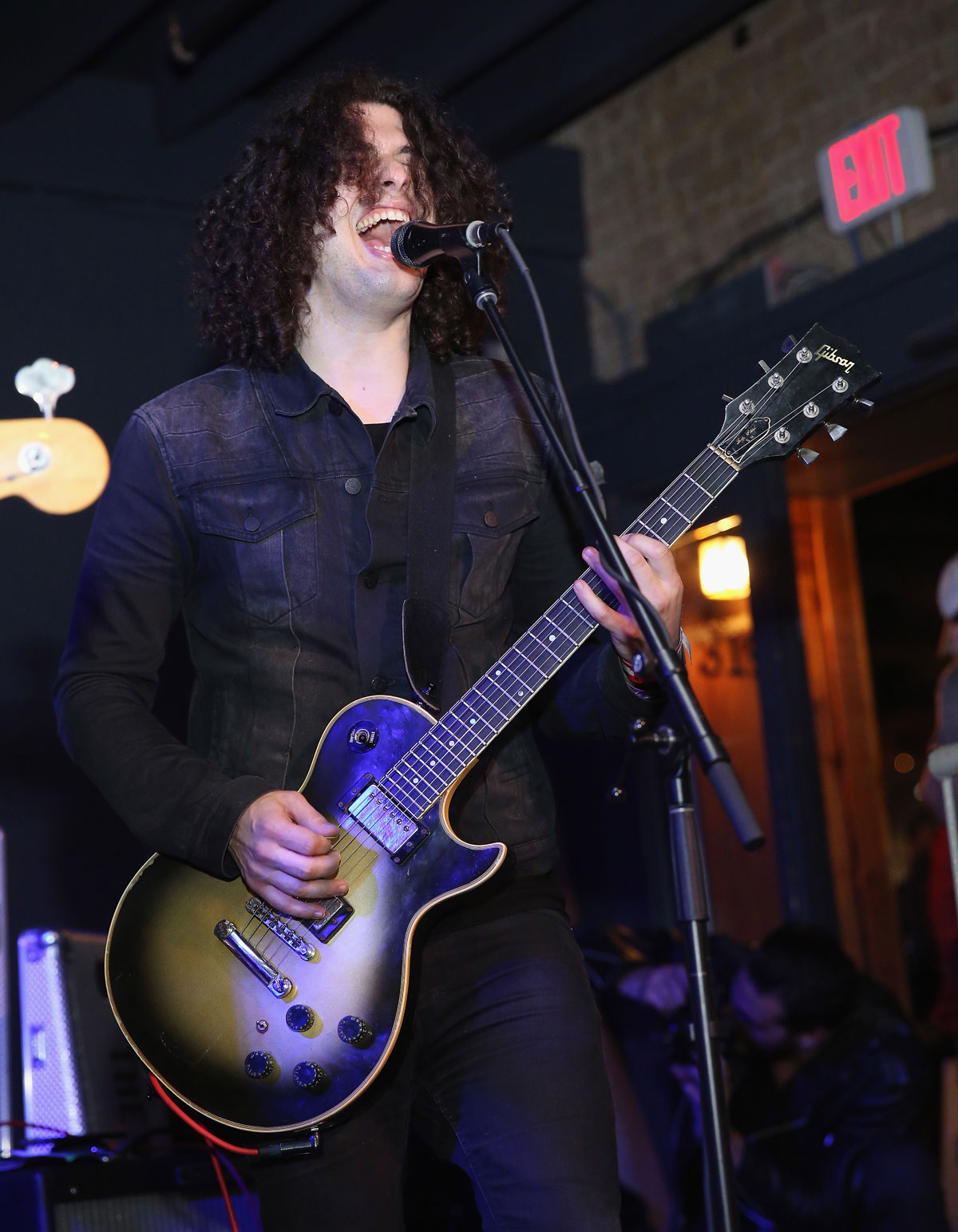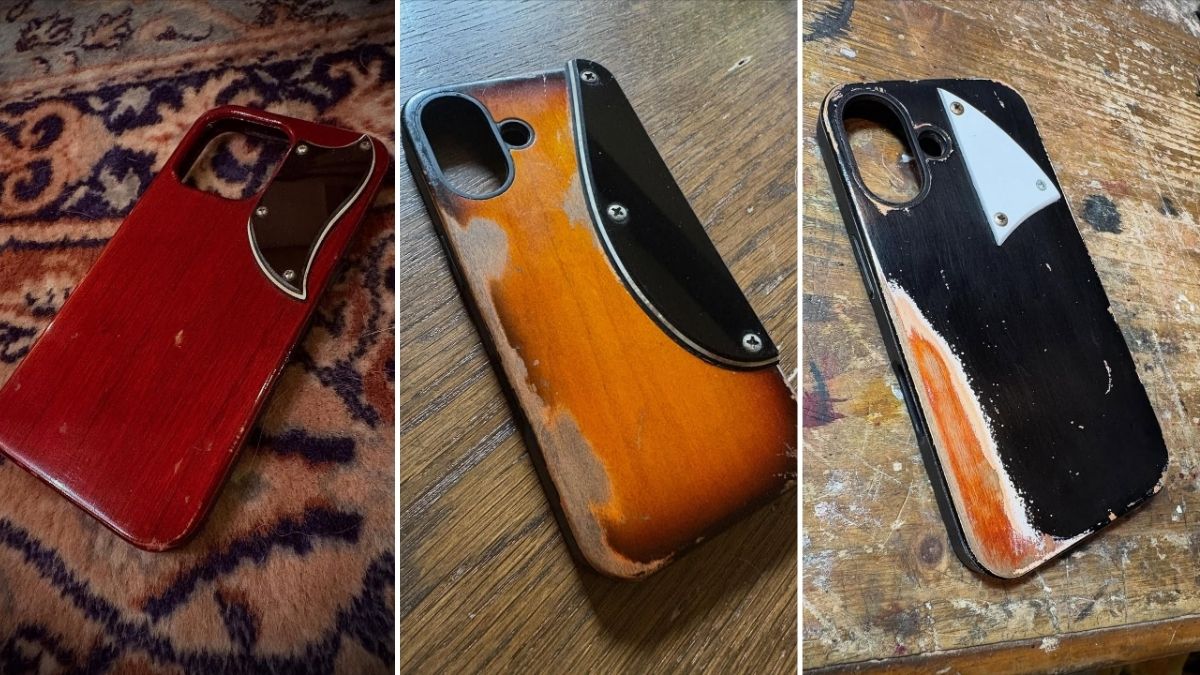Ilan Rubin: “Whatever I’m playing, whether it’s chords or a riff, I instinctively envision what the beat under it will be”
The New Regime multi-instrumentalist and youngest living member of the Rock and Roll Hall of Fame on recording latest album Heart Mind Body & Soul, why he's a fuzz maniac, and what it takes to play with Nine Inch Nails and Angels & Airwaves

“Writing music is always a natural process for me,” says Ilan Rubin, who became the youngest living member of the Rock and Roll Hall of Fame last year for his work in Nine Inch Nails.
As well as being a member of the Tom DeLonge-fronted Angels & Airwaves, he also works as a solo artist under the name The New Regime, having recently released a deluxe version of his latest album Heart Mind Body & Soul.
“I don’t really come up with the concept or idea before I do it,” he continues, when asked about how one goes about creating such an expansive and musically varied batch of songs – a body of work that can stretch from moments of poppy brilliance to fuzz-driven terror.
“Whatever it ends up being is the result of me writing based on the instrument I’m playing, the mood I’m in, the sound I have dialed in… whatever it may be. I know a lot of people like to think, ‘I want this one to be the terrifying left-field song or the poppy one!’ but I never go into the process with that kind of framework.”
There is, however, a moment in his creative process for these considerations – and that comes at the end, when close to rounding the album off. Taking more of a bird’s-eye view can allow for informed decisions about what could help balance the music better and ensure each track is primed for maximum impact.
“I might think, ‘This could use something a bit heavier or a little lighter,’ but that’s the only instance where I make a decision before actually writing. Usually, I’ll go wherever I want to go and I’ll get there!”
Here the multi-instrumentalist looks back on the gear used for his latest recordings and also dissects his role in Nine Inch Nails, now standing as the longest-serving drummer after replacing Josh Freese in 2008...
All the latest guitar news, interviews, lessons, reviews, deals and more, direct to your inbox!
Surreal Disaster has an interesting mix of alt-rock fuzz and funky seventh chords...
“That’s a good example of what I was just saying. The first thing I came up with, and it’s rare to happen like this, was the beat. I was messing around with some programming and clapped loop things on top, and that inspired this synth-based idea that didn’t end up being part of the song.
“So I ditched that because I still liked the beat and started again. Once I hit the reset button, listening to the loop for a while, I fell into the groove of those guitar chords in the chorus. The rhythm, the voicings… I just played around with them and it ended up dictating where the song should go.
“For those of you who like to geek out on music structure and that sort of thing, it wasn’t my intention to start with the chorus. But after playing with it, I realized I wanted the verse to start after and sink into a different progression – that indicated what would be the verse or the chorus and so on. I’m a big fan of pre-choruses and bridges, as I’m sure you can tell after listening to the music...”
But typically you won’t write them first?
“Usually when you write a song, the first progression you write will be a verse because that’s usually the first part of a song… but this was one of those things that just worked itself out naturally. You mentioned fuzz bass and seventh chords – I like for music to be this amalgamation of different things.
Usually when you write a song, the first progression you write will be a verse because that’s usually the first part of a song
“This has a bit of a funkiness to it, in terms of how the bass interacts with the drums. But at the same time, I really wanted to fuzz it all out and throw in catchy melodies. By the time I got the bridge, I wanted to take it somewhere else - and I got into that key change or modulation and it became this fun puzzle solving of finding my way back.”
Speaking of fuzz, it definitely sounds like you had a few different pedals with you in the studio...
“I am all over the place when it comes to fuzz. I like looking at different fuzz characters, for example. There are different flavors out there – you can have your Muff-style fuzz, which I like in a darker and woolier context. I tend to keep those on the dark side.
“But in terms of the bright and brassy ones, I love the Octavia effect, which is a sound you can achieve from numerous pedals. The Fender Blender is one of my favorites for that, and I used that all over the place.
“For the Muff-style ones, I obviously use Big Muffs, but there are also other great ones. Maxon, a few years ago, had this Fuzz Elements series where they took a classic pedal and would add a parametric EQ, making it very handy, especially in a studio setting.
“Then there are others where I don’t really even know what they are, but I love them. I wouldn’t call the [Crowther Audio] Prunes And Custard pedal a fuzz, but it certainly gets there...”

So you’re a bit of a fuzz maniac, basically!
“Oh, I could go on and on. I love fuzz! There’s another by Jext Telez called the White pedal, which is modeled after the solid-state fuzz that was in the Vox amps The Beatles were using around Sgt. Peppers and Magical Mystery Tour.
“I also love DI fuzzes. All of these things yield very different results when they are coming straight into a channel rather than through an amp.
“There’s a song called You Can Be (Whoever You Want To Be) which has this incredibly compressed and distorted fuzz guitar, really what’s happening is it’s going DI and then being distorted by a Stressor in harmonic mode.
“Something about that combination really brings out the brassy and edgy fuzzines, which is a sound that I love. You also get things like the [JHS] Colour Box, which can emulate the Maestro Brassmaster.
“I’m all over the place when it comes to fuzz. I love stuff that’s overly aggressive that you have to tame in order to make it barely usable like [Z.Vex] Fuzz Factorys…”
Speaking of your rig, it sounds like a lot of vintage gear was involved...
“Yeah, it was all over the place! A real joy of recording the guitars for this album came down to where they were recorded – this fantastic studio just outside of El Paso, Texas, called Sonic Ranch. The reason why it’s so incredible is because it’s very secluded in the middle of a pecan farm.
“It’s actually a series of different studios, this whole complex where you live, eat and record there. The gear there is phenomenal. I took some of my own pedals, as you might expect from what I was just saying, but I didn’t take a single guitar, amp or bass...”
And what exactly did you find there?
“That place has a crazy selection and going through my internal memory bank, the main guitar was a 2004 Gibson Les Paul VOS, but the Jimmy Page #1 that went into production.
A real joy of recording the guitars for this album came down to where they were recorded – this fantastic studio just outside of El Paso, Texas, called Sonic Ranch
“And it doesn’t get better than him when it comes to inspiration for me. I loved that guitar because I tend to prefer slimmer necks and that felt like the thinnest profile you can possibly get on a Les Paul. It’s quite unique because it gets thinner as you go up on the neck… it was a beautiful-playing guitar that sounded fantastic.
“There was also a transition era ‘61 SG from when they were called Les Pauls, which was a stunning guitar. And yeah, there were certainly quite a few Fenders. A white Esquire that legend has it used to belong to Stevie Ray Vaughan, which sounded fantastic.
“There was a ‘68 or ‘69 Strat that I used for the solo in Battle of My Bones, with a Uni-Vibe sound on it. I thought, ‘Let’s go for it!’ It was such a stunning Strat, I wanted to take it there.”
A pretty nice mix of humbucker and single-coil sounds, then!
“There were definite go-to’s for humbucker and single-coils but whenever I got bored and wanted to try something new, I’d pickup a Mustang or something with P-90s. It was great fun to look at the rack of cases and try things that we hadn’t used so far. The same goes for basses, I was going through Fender P-Basses for most of it.
“There was also a Mustang bass that legend has it belonged to The Byrds. Tony, the owner of Studio Ranch, is a tremendous fan of all things music and is a bit of a collector!
“It was fun playing these instruments that had all this history. For any acoustic work it was pretty much an Epiphone El Dorado... it sounded great and had the tiniest neck. I haven’t even talked about amps yet!”
How much does your work as a drummer inspire what you come up with on guitar and vice-versa?
“That is a very good question… and it’s interesting you are asking from the perspective of guitar. Because bass and drums have a much closer relationship. It’s hard to narrow down how one necessarily impacts the other but I can say with absolute certainty that they all impact each other.
“Whatever I’m playing, whether it’s chords or a riff, I instinctively envision what the beat will be, or a ballpark. But then as I bring the bass into it, the rhythms start to lick up. Then when I come back around with the guitar, it may affect how I play on top of that. It’s an interesting concept.
“Every instrument you learn how to play, whether it’s really well or barely able to get by, it certainly impacts the way you think, and especially in the writing phase. For me personally, my biggest inspiration is Led Zeppelin. You might listen to The New Regime and think it doesn’t sound like them at all...”
Well, Smoke & Mirrors has what some might call a classic Bonham groove...
“It does. You might find bits and pieces because John Bonham’s my favorite drummer, Jimmy Page is my favorite guitarist, John Paul Jones is my favorite bassist and Robert Plant, etc. But taking those elements and breaking them down, you can see there was a tremendous amount of groove in how each of those guys played.
Every instrument you learn how to play, whether it’s really well or barely able to get by, it certainly impacts the way you think
“But together it made this new element of groove, and that helped me understand how instruments interact with each other. By this point it’s on a very intuitive level and I don’t have to think about it much.”
Your work in Nine Inch Nails hasn’t been limited to the stage – you played on a handful of tracks that appeared on 2013’s Hesitation Marks. What do you remember about the experience?
“I look back on that time very fondly, as I do my entire time with NIN. I joined in 2009 – technically I got the job in late 2008 but the first shows were early 2009. As that cycle came to a close, it was kinda up in the air as to what would happen next.
“The rehearsals for Hesitation Marks started in 2013. I fell back into NIN mode and got to play on recorded material, which was fantastic. We were rehearsing ahead of the tour and they were still wrapping up the album.
“As you said, I only played on a couple of tracks – NIN have never really been a band to feature the most amount of acoustic drums.
“I remember having a conversation with Trent [Reznor] about it asking if he was thinking of a With Teeth kind of thing, because the drums sounded great and it would be the NIN album with the most acoustic drums on it. And he said, ‘Definitely not that, but we’re going to go the opposite route – where it’s dead, almost disco-sounding drums.’”

So what kind of kit did you play?
“I was literally playing on a Ringo replica, this beautiful vintage Ludwig with tea towels on it and the whole nine in terms of getting that sound. It was so much fun and I absolutely loved it.
“I’d say it’s also great because it’s one of the last times there were some acoustic drums on something in a way that sounded fresh. Trent has so much material dating back to different periods, I guess you never know what’s gonna show up on a NIN record!”
On those tours, Pretty Hate Machine track Sanctified got reworked rather fantastically. How did that come about?
“Yeah, Trent just had the idea of what he wanted to do. I don’t know for sure, but I imagine that when anybody so drastically changes a song for a live performance, they’re saying, ‘I like this song but maybe the way I did it in ‘89 might not be the way I do it now.’ He had this very cool idea of reimagining it.
“What’s great about this version is that when we first started playing it, around 2013 or 2014, I was actually playing a machine drum controller and doing all the loops but as things progressed and the outfit of the band continued to evolve, I ended up playing bass for that track during the last few years.
“And that was obviously a ton of fun. Being able to play drums in such a great band, with great parts and so much energy, is incredible – but then being able to get up and play bass or guitar or piano makes it even more exciting for me. I can’t get enough of it!”
Joining the band when you were just 20 years old, you must have learned a lot over the years...
“Absolutely. I’m constantly learning being around a guy like that and the band in general. It’s awesome… always interesting and makes for educational and exciting experiences. I’ve learned a lot over the years. When I joined, I remember having this feeling at the rehearsal that was like, ‘Finally I’m in the kind of band I’ve always wanted to be part of!’
When you step into a room where everyone is operating at maximum professionalism it's the biggest breath of fresh air
“You can be a great musician but when you step into a room where everyone is operating at maximum professionalism it's the biggest breath of fresh air. I’d been in bands in the past where professionalism wasn’t even in the vocabulary or superseded by awful time inefficiency. It was very evident from day one with NIN that it would be as smooth as could be.
“I can’t complain. I love the whole rehearsal period. With a lot of friends of mine or other people I’m in bands with, we’ll discuss rehearsal schedules. And I’ll tell them that before the Tension tour in 2015, we rehearsed for about three months… which is mind-boggling to people who are used to getting together for a couple of days before going off and doing it.
“But it’s things like that which make it very apparent why everything about the NIN live show is as good as it is.”
We don’t envy you during parts of March Of The Pigs and Wish – what would you say has typically been the hardest part of the set?
“They are all awesome to play! The brutal part in March Of The Pigs is when I jump off the drums to get to the piano for the second time and there’s that stretched-out piano and vocal moment. The click goes away and I’m just there waiting for Trent to sing so I can play the chords to accompany.
“But the track is going to come back in where it comes in. He knows that I’ve got to run back to the kit and he makes it very dangerous for me! He pushes me to that limit and finds it hilarious. I find it funny afterwards but the whole time I’m at the keys I’m thinking, ‘I have to get back there, he knows I have to get back there, why isn’t he singing it?!’
“There have been one or two times where I’ve been like, ‘Fuck it, I’ve got to go!’ and run back to the drums to get through the song. And that was that. It’s the most terrifying part for me and there’s a bit of a sick sense of humor with Trent [laughs]! I may develop some health complications later in life from all the smoke on stage, but that’s yet to be determined.”
As for your work in Angels & Airwaves, it does feel a bit like Trent Reznor and Tom DeLonge are worlds apart, both in terms of personality and their creative endeavors...
Angels & Airwaves is more of a single-coil world, whether that be Strats, Teles or Rickenbackers
“Yeah… you would be right in assuming they are very different personalities. That makes it fun for me, going from one to the other, and I like having these two worlds be as different as they are. I have a lot of fun playing in Angels And Airwaves, especially live. And, I suppose considering this is Guitar World, with the Angels stuff I do guitars as well on the albums.
“It’s different to how the guitars were done for The New Regime stuff, where I’m making sure I have good humbucker and single-coil sounds. Angels & Airwaves is more of a single-coil world, whether that be Strats, Teles or Rickenbackers.
“Me and Tom will come up with parts together or I’ll go off on tangents and Tom will pick out the bits he likes. But it’s a completely different palette of sounds.
“Obviously, there are as many dotted eighth-note delays as you can possibly cram into things. There’s still a lot of heaviness, too, especially on this new album that’s currently being mixed.
“It’s nice to know all the stuff we’ve been working on is finally coming out. Again, I didn’t take any of my guitars – I used all the things that are part of Tom’s guitar world – no pun intended!”
Amit has been writing for titles like Total Guitar, MusicRadar and Guitar World for over a decade and counts Richie Kotzen, Guthrie Govan and Jeff Beck among his primary influences as a guitar player. He's worked for magazines like Kerrang!, Metal Hammer, Classic Rock, Prog, Record Collector, Planet Rock, Rhythm and Bass Player, as well as newspapers like Metro and The Independent, interviewing everyone from Ozzy Osbourne and Lemmy to Slash and Jimmy Page, and once even traded solos with a member of Slayer on a track released internationally. As a session guitarist, he's played alongside members of Judas Priest and Uriah Heep in London ensemble Metalworks, as well as handled lead guitars for legends like Glen Matlock (Sex Pistols, The Faces) and Stu Hamm (Steve Vai, Joe Satriani, G3).





